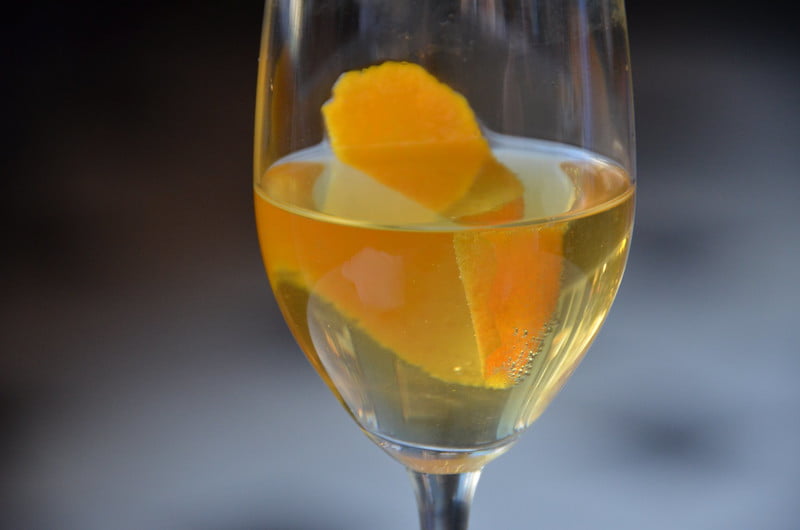The Champagne Cocktail lives up to its billing as a decadent drink worthy of galas and black tie soirees. Because it’s relatively easy to make, we also like to sip on one during ordinary times, such as while we’re cooking dinner or over a favorite Netflix series.
Basically an Old Fashioned with sparkling wine in place of whiskey, the Champagne Cocktail is a fantastic union of bitter, sweet, fruity, and effervescent. It looks cool in your hand, a tiny lava lamp of surging bubbles accented by a classy-as-can-be lemon garnish. Oh, it also tastes good, with a couple of extra flavors and fragrances stacked atop a sturdy base layer of bubbly wine.
Related Reading
The original recipe goes back to the earliest bar manuals of the 19th century. It’s a simple version, made with wine, sugar,
There are some important things to remember when making a proper Champagne cocktail. First and foremost, the Champagne part. Good, genuine Champagne should not be mixed with. It’s sophisticated stuff to be enjoyed on its own, like any great wine. In sourcing something for this cocktail, opt for a tasty Prosecco. They tend to be extra fizzy and offer good flavor and texture for the money. If you do go Champagne, simply to honor the name, go with a bargain buy.

For the glass, yes, vintage Champagne vessels are cute but the idea is to hold on to the effervescence. That said, we suggest a slender flute to hold on to that C02. It looks elegant and you’ll end up with a more playful drink in the end. Plus, you’ll be able to stare at the mesmerizing column of bubbles rising up the glass to the surface. Again, thinking about the bubbles, there’s no need to stir this particular drink. That will only flatten the fizz you’ve worked so hard to preserve.
A major component of this cocktail is the sugar cube. The original recipe asks that it be soaked in
The lemon twist is another major player in the Champagne Cocktail. Get yourself a good zester or channeling knife if you don’t have one already. Hold the lemon on its side and run the zester around the circumference of the fruit at least one revolution. In may take a few stabs, but you should end up with a nice strip of citrus that wants to fold naturally. You can do the same with a vegetable peeler if you don’t mind a wider twist format.
Remember to express the citrus. This means giving it a fold and pinch to leech out some juice. After some practice, it’ll look like a flash of mist entering your cocktail. Placing the twist at least partially in the drink is key, that way it will imparting citrus notes as you sip. Now, you can sit back and enjoy.
Classic Champagne Cocktail
- Dry Prosecco (we like Mionetto Brut)
- 1 sugar cube
- Angostura bitters
- Lemon twist for garnish
Method: Drop your bitters-soaked sugar cube into a chilled flute and slowly top with sparkling wine. Don’t stir, express the lemon twist over then drink then place it into drink.
Euro Champagne Cocktail
- Dry sparkling wine
- 1 sugar cube
- .75 oz Cognac
- Angostura bitters
- Lemon twist for garnish
Method: Place the sugar cube onto a spoon and add the
Editors' Recommendations
- These are the 7 classic tequila cocktail recipes you need to know
- 6 easy camping cocktails to shake your post-hike thirst
- How to make a mojito: The ultimate cocktail recipe
- How to make The Last Word cocktail, a gin classic from another era
- How to craft a heavenly vodka martini: Shaken or stirred


